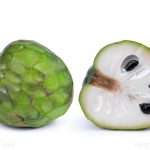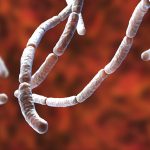
Header Menu
Pesticide residues still prevalent in honey: Recent review of samples from around the world reveals danger to bees
Thursday, August 30, 2018 by Rhonda Johansson
http://www.naturalnewspesticides.com/2018-08-30-recent-review-of-samples-from-around-the-world-indicate-danger-to-bees.html

An international team of scientists have just concluded that roughly 75 percent of honey worldwide is contaminated (to some degree) with neonicotinoid residues. This, despite a European Union (EU) partial ban on the pesticides in 2014. These conclusions suggest that more actions need to be taken to limit the exposure insect pollinators have with these pesticides. The authors stated that while the observed concentrations of neonicotinoids were too low to be considered a risk to human health, long-term chronic exposure may affect the well-being of honeybees globally.
The objective of the study, published in the latest edition of PLOS ONE, was to determine if the EU ban of neonicotinoid pesticides was effective in reducing its exposure to honeybees. One hundred and thirty samples were collected from beekeepers in the U.K., with another 70 samples gathered from various countries in the world. Cross-analysis revealed that:
- In the U.K., more than half of honey samples were contaminated before the EU moratorium.
- This was reduced by more than a fifth after the ban took place.
- Overall, however, three out of four of the total collected samples were contaminated.
- Honey from Germany and Poland exceeded the maximum residue levels, whereas honey from Japan reached 45 percent of the limits.
Authors of the study state that their results prove that the EU moratorium was only “partially effective in reducing exposure risk to bees.” Nevertheless, they say that their results may have been skewed by neonicotinoid residues which may have seeped into the soil and which proliferated during the early honey harvest that coincided with the oilseed rape flowering. The residues may have also been part of the winter seed treatments which are currently exempt from the EU restrictions. All the same, experts say that honeybees are still a vulnerable group. (Related: Pesticides are killing birds, bees, and bats by the millions.)
Continued exposure to pesticides
The results of the study are not limited to Europe. Recent data from the U.S. Food and Drug Administration (FDA) reveals that thousands of commonly consumed foods are laced with pesticide residues. Our government expects the exposure to only increase. Breaking down the FDA report for fiscal year 2015, we find that:
- 50 percent of domestic food and 43 percent if imported food items are contaminated with various forms of pesticides.
- This is up from 37 percent of domestic and 28 percent of imported food having residues in 2010.
- This is a 38.5 percent increase of domestic and a 39 percent increase in imported food items laced with pesticides in 2005.
The FDA report further stated that 82 percent of domestic American fruits and 62 percent of domestic vegetables contained weed killers and contaminants from various pesticides and insecticides. This was further broken down to:
- 97 percent of apples;
- 83 percent of grapes;
- 60 percent of tomatoes;
- 57 percent of mushrooms, and
- 53 percent of plums containing pesticide residues.
The FDA study coincides with a more recent U.S. Department of Agriculture (USDA) report which claimed that during the same fiscal time period of 2015, roughly 85 percent of more than 10,000 food samples contained pesticide residues.
Medical professionals have stated that the legal limits set by the U.S. Environmental Protection Agency (EPA) is outdated and too politically-motivated to be considered accurate.
“Risk assessment practices at federal agencies have not been updated for modern scientific principles, including accounting for the fact that people are exposed to multiple chemicals and that certain groups, such as [those who are genetically susceptible], the very young, and old [are] at greater risk of exposure,” warned former EPA scientist Tracey Woodruff.
Sources include:
Tagged Under: Tags: badfood, bees, Contaminated Food, contaminated honey, danger to bees, EPA, FDA, food supply safety, honey, honeybees, insecticides, pesticide residues, pesticides, sweetners, toxic chemicals, USDA





